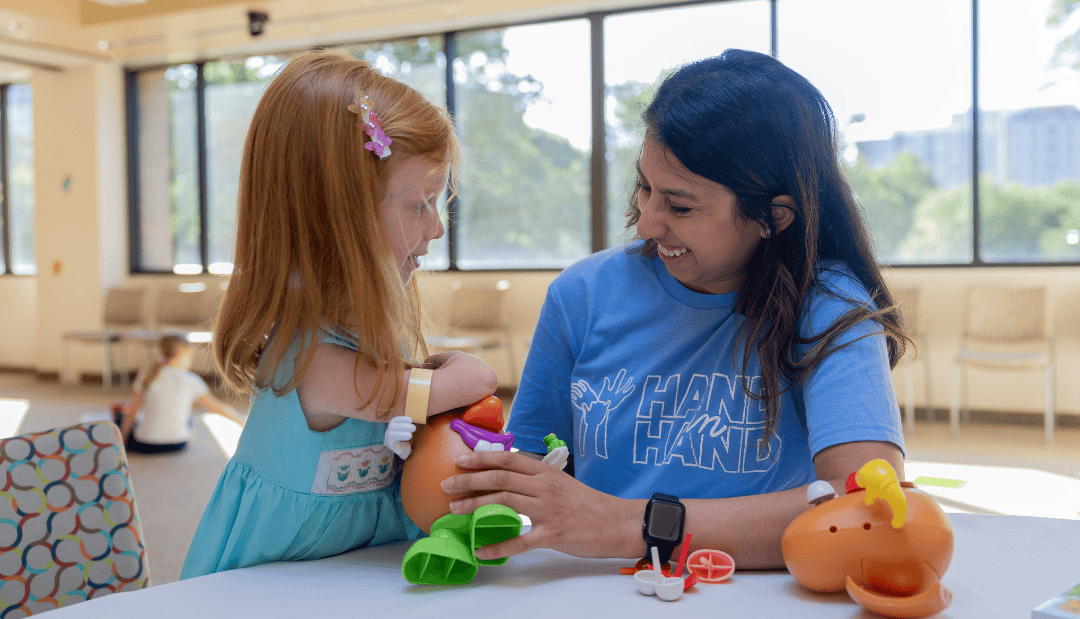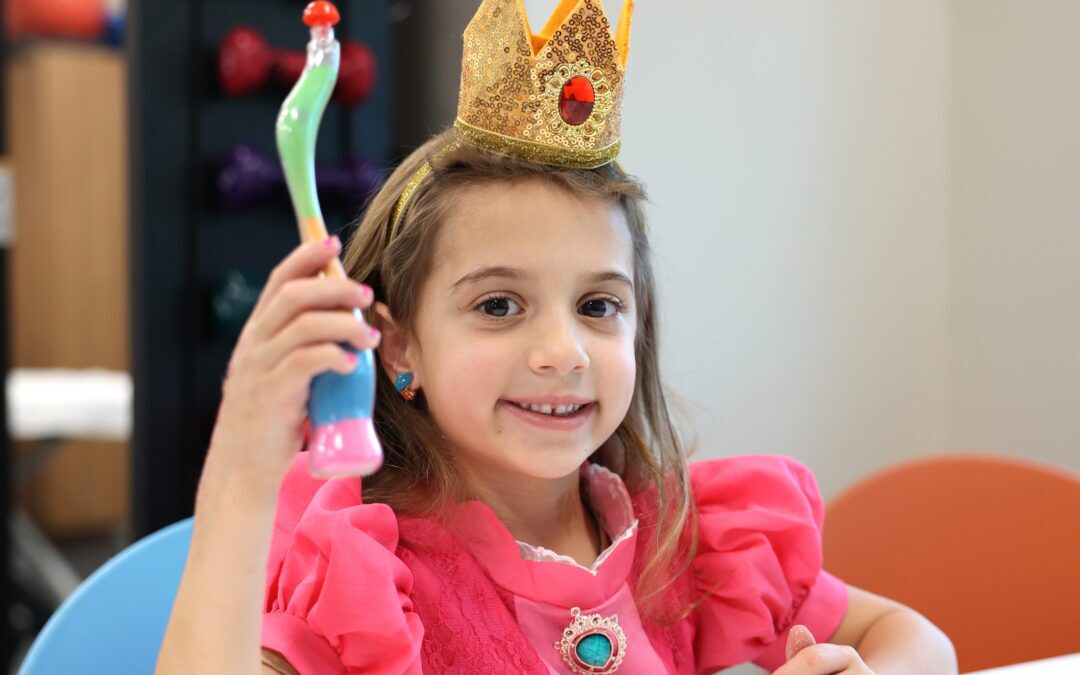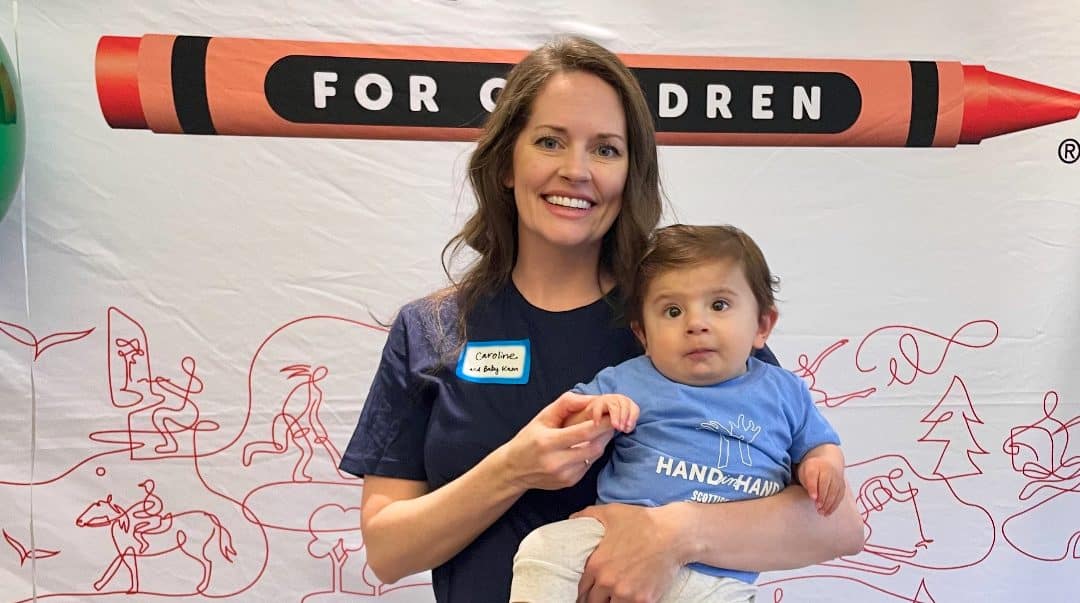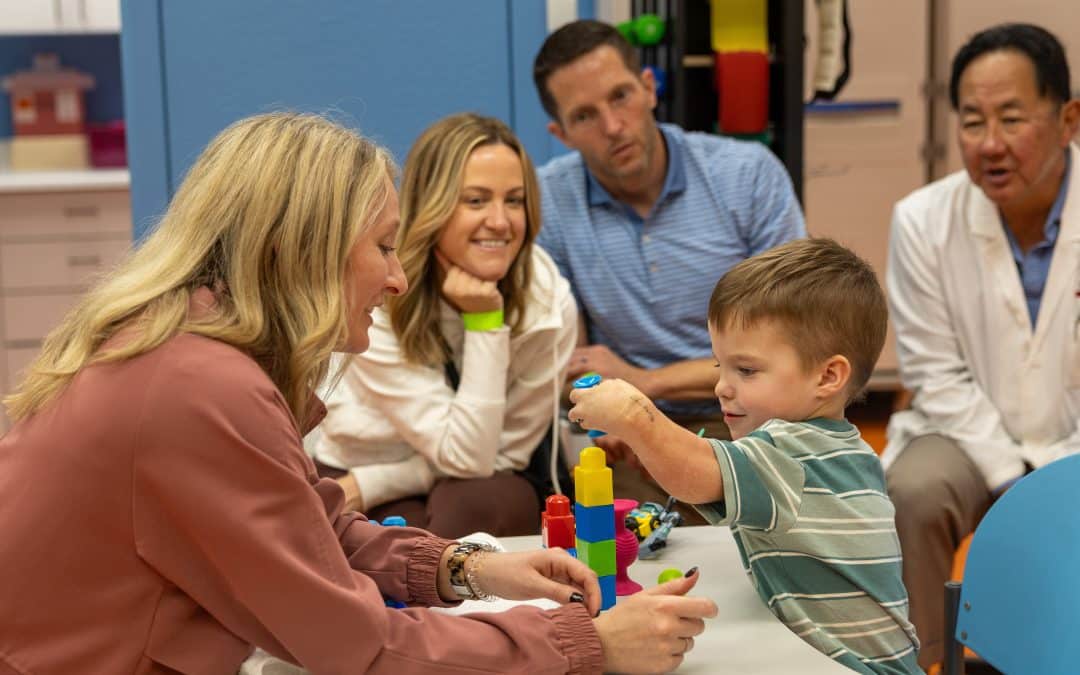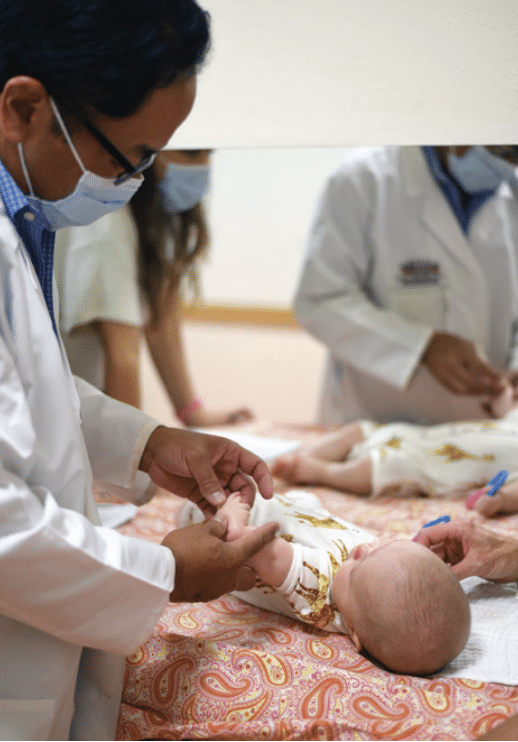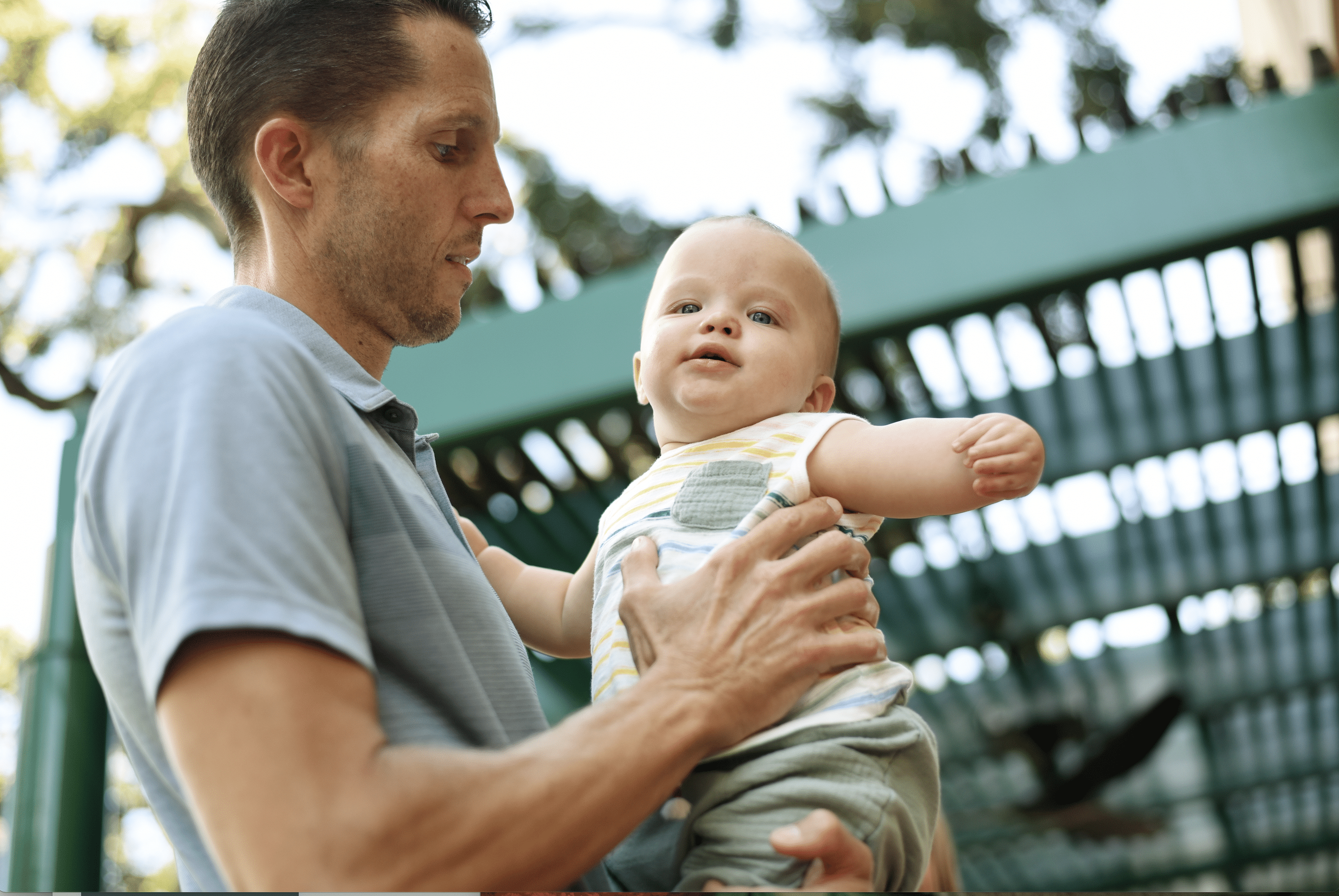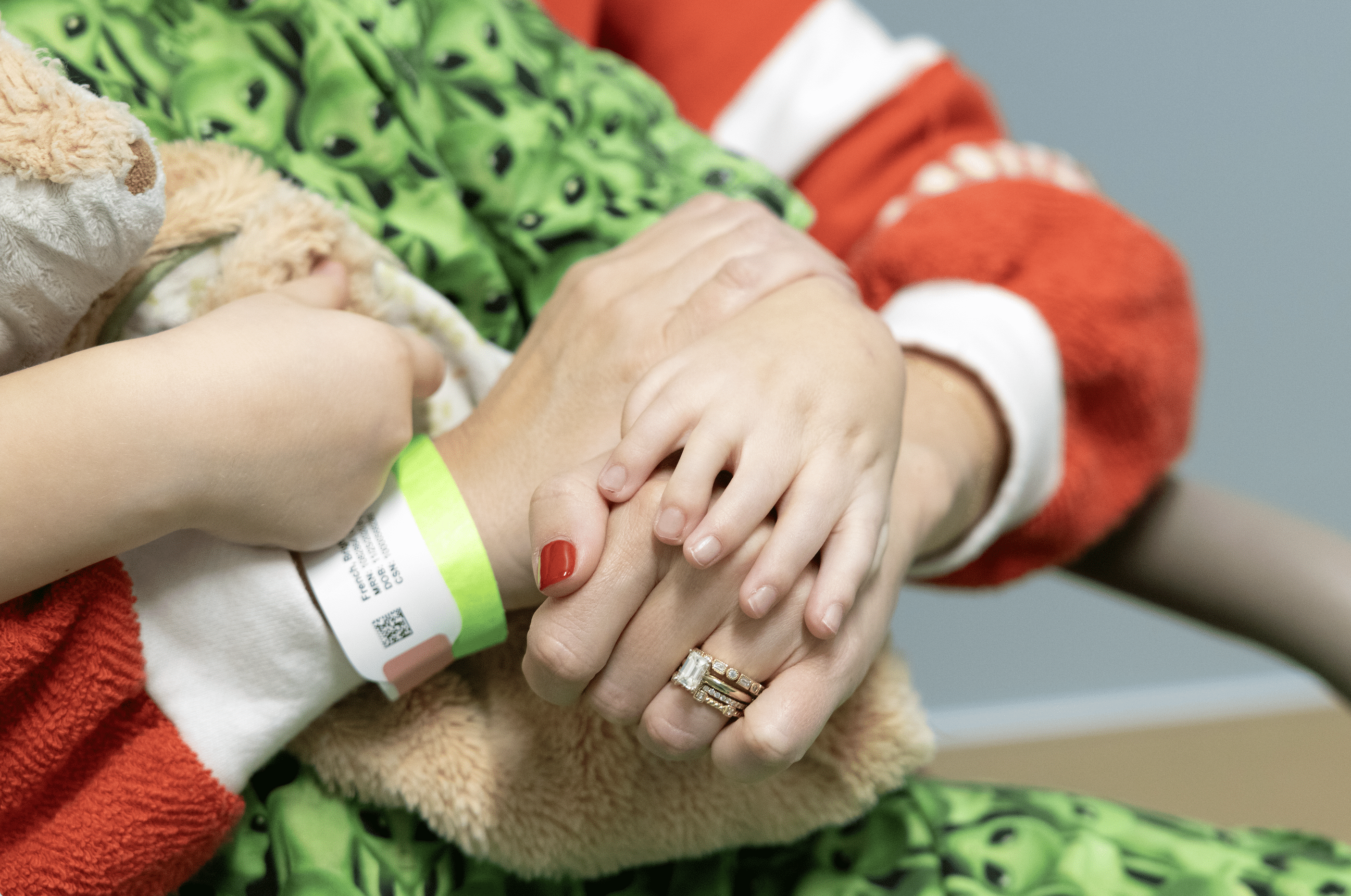Kamran, better known as “Kam,” is always on the move! Whenever his family takes a break away from the city, Kam enjoys spending time on a swing set or riding up and down hills in golf carts. Though he is full of energy and curiosity, 2-year-old Kam has endured many challenges to be able to enjoy his favorite activities.
When Kam was born, his parents noticed contractions in his hands, which led them to seek solutions at other facilities near their home in Fort Worth, Texas. Kam was diagnosed with congenital contractures of the limbs and face, hypotonia and developmental dysplasia (CLIFADD) syndrome. CLIFADD is a rare, congenital condition that causes various limbs to contract. Kam was also diagnosed with distal arthrogryposis, a symptom of CLIFADD. Distal arthrogryposis affects Kam’s hands, causing them to curve inward, which limits his range of motion.
“We were completely in shock and even fearful when we heard the news,” Caroline says. “We immediately sought as much information as we could find, even though there wasn’t much.”
Seeking a second opinion for treatment options, Kam and his family came to Scottish Rite to be evaluated by Director of the Charles E. Seay, Jr. Center for Excellence in Hand Scott Oishi, M.D., FACS, and occupational therapist Amy Sitabkhan. “Within minutes of our appointment, we felt at ease and knew that we had made the right decision to come to Scottish Rite,” Caroline says. “The team was so caring and patient, even taking the time to talk to us as parents and understand our needs better for our son.”
Together, Dr. Oishi and Amy tailored a treatment plan that focuses on improving Kam’s mobility. With demonstrations led by Amy, Kam’s family learned exercises to continue stretching his fingers to advance his progress at home each day. Kam’s family learned proper nighttime bracing technique, which stretches his fingers to improve his range of motion. After a few months, Kam began grasping his toys with his hands.
“We haven’t felt the same care and support from anywhere else since coming to Scottish Rite,” Caroline says. “It’s because Scottish Rite treats Kam like a child first and a patient second. Our family feels so taken care of whenever we are here.”
Kam and his family recently began attending the Hand in Hand Support Group, where they found a sense of community at Scottish Rite. This specialized group connects families of children with hand or upper limb conditions with resources and provides a forum to share their experiences. While Kam’s care journey continues, his family remains committed to progress not only for Kam but also for his older sister. Now, they’re focused on teaching their Kam’s sister daughter the importance of acceptance and understanding of those with different conditions.
“Hand in Hand Support Group has been so special for our family,” Caroline says. “I recognize the importance of connecting with others to share similar experiences, as well as hope. To our family, Scottish Rite has been a light on this unknown path.”
Do you have a story? We want to hear it! Share your story with us.


